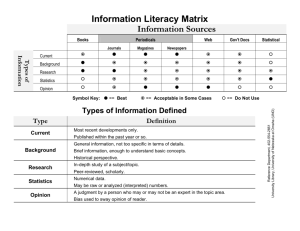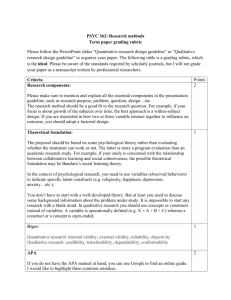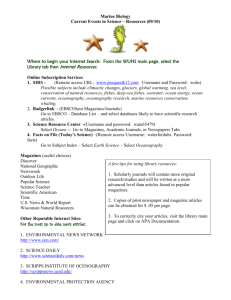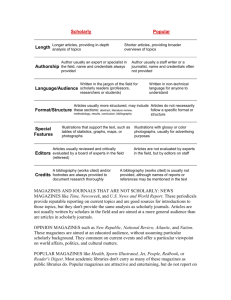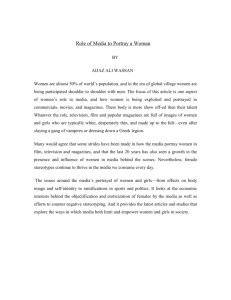distinguishing scholarly journals from other periodicals
advertisement
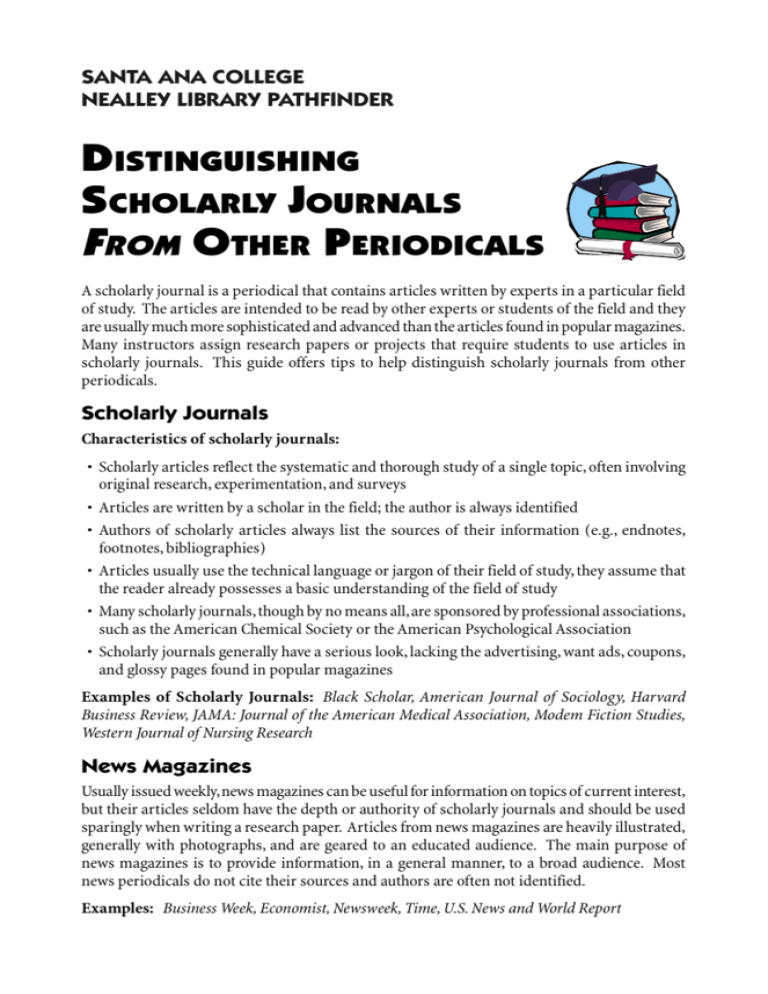
SANTA ANA COLLEGE NEALLEY LIBRARY PATHFINDER DISTINGUISHING SCHOLARLY JOURNALS FROM OTHER PERIODICALS A scholarly journal is a periodical that contains articles written by experts in a particular field of study. The articles are intended to be read by other experts or students of the field and they are usually much more sophisticated and advanced than the articles found in popular magazines. Many instructors assign research papers or projects that require students to use articles in scholarly journals. This guide offers tips to help distinguish scholarly journals from other periodicals. Scholarly Journals Characteristics of scholarly journals: • Scholarly articles reflect the systematic and thorough study of a single topic, often involving original research, experimentation, and surveys • Articles are written by a scholar in the field; the author is always identified • Authors of scholarly articles always list the sources of their information (e.g., endnotes, footnotes, bibliographies) • Articles usually use the technical language or jargon of their field of study, they assume that the reader already possesses a basic understanding of the field of study • Many scholarly journals, though by no means all, are sponsored by professional associations, such as the American Chemical Society or the American Psychological Association • Scholarly journals generally have a serious look, lacking the advertising, want ads, coupons, and glossy pages found in popular magazines Examples of Scholarly Journals: Black Scholar, American Journal of Sociology, Harvard Business Review, JAMA: Journal of the American Medical Association, Modem Fiction Studies, Western Journal of Nursing Research News Magazines Usually issued weekly, news magazines can be useful for information on topics of current interest, but their articles seldom have the depth or authority of scholarly journals and should be used sparingly when writing a research paper. Articles from news magazines are heavily illustrated, generally with photographs, and are geared to an educated audience. The main purpose of news magazines is to provide information, in a general manner, to a broad audience. Most news periodicals do not cite their sources and authors are often not identified. Examples: Business Week, Economist, Newsweek, Time, U.S. News and World Report Popular Magazines These are periodicals that are typically found at grocery stories, airport newsstands or bookstores in a shopping mail. Articles are usually very short, written in a simple language and are developed to meet a minimal educational level. The main purpose of popular periodicals is to entertain the reader, to sell products, and to promote a point of view or lifestyle. Because there is generally little depth to the content of the articles, popular magazines should not be used when researching a term paper or report. Examples: Car and Driver, Ebony, Glamour, Good Housekeeping, Gourmet, Life, Parents, People Weekly, Rolling Stone, Travel/Holiday, TV Guide, Variety Opinion Magazines These magazines contain articles aimed at an educated audience interested in keeping up with current events. The articles are frequently written from a particular political, economic or social view, and readers of these magazines must be aware of the periodical’s political and social viewpoints and biases. Often newspapers or news magazines will have an opinion section within the periodical, and readers should be aware of whether the periodical is expressing a conservative, moderate or liberal point of view. Examples: Christianity Today, Commentary, Mother Jones, Ms Magazine, Nation, National Review, New Republic, Progressive Conservative/Right Magazines Moderate Magazines Liberal/Left Magazines American Legion American Rifleman American Spectator Commentary Modern Maturity National Review Orange County Register Policy Review Soldier of Fortune Business Week Economist MacLean’s New Republic Newsweek Time U.S. News & World Report Bulletin of the Atomic Scientist Monthly Review Mother Jones Ms Magazine Nation New Statesman Progressive World Marxist Review Tabloids or Sensational Magazines Usually issued in a newspaper format, sensational magazines use elementary, inflammatory, and sensational language and assume a certain naivete and gullibility in their audience. Their main purpose is to arouse curiosity, to cater to popular superstitions, and to sell high volumes of issues. They often do so with flashy headlines designed to astonish (e.g., “Martians Take President Captive,”“Junk Food Cures Cancer”). Because the articles are inaccurate and unreliable, sensational magazines should never be used when researching and writing reports. Examples: Globe, National Enquirer, Star 05/01 DR RSCCD PUBLICATIONS FORM 0401-031-EPM6.5
